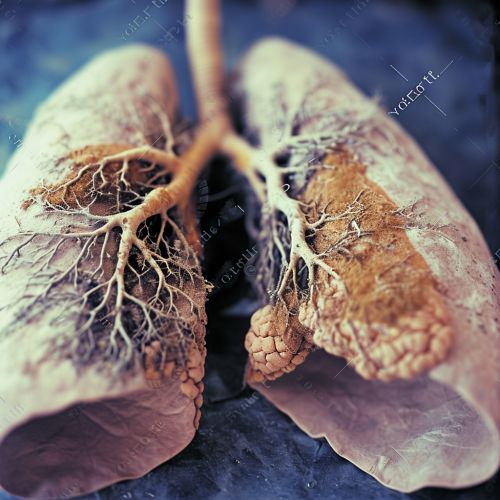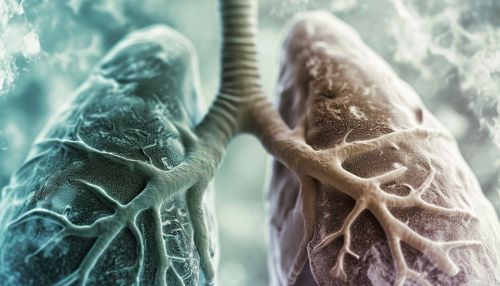Bronchiectasis
Introduction
Bronchiectasis is a long-term, chronic condition where the airways of the lungs become abnormally widened, leading to a build-up of excess mucus that can make the lungs more vulnerable to infection. The term bronchiectasis is derived from the Greek words "bronkhia" which means bronchi and "ektasis" which means dilation. It is a disease that has been recognized since the time of Hippocrates and is characterized by irreversible dilatation and distortion of the bronchi and bronchioles.
Etiology
The most common causes of bronchiectasis are severe lung infections, genetic conditions such as cystic fibrosis, and connective tissue diseases. However, in many cases, the cause of bronchiectasis is not known. This is referred to as idiopathic bronchiectasis.
Pathophysiology
Bronchiectasis is a result of chronic inflammation and infection in the bronchi, the airways of the lungs. The inflammation causes the bronchi to become damaged and dilated. This damage is often irreversible. The dilated bronchi allow for an accumulation of mucus, which further impairs lung function by obstructing airflow and providing a breeding ground for bacteria.
Clinical Features
The main symptoms of bronchiectasis include a chronic cough with mucus production, breathlessness, chest pain, and recurrent infections. The severity and frequency of symptoms can vary widely from person to person. Some people may have periods of severe symptoms, known as exacerbations, followed by periods with few or no symptoms.
Diagnosis
The diagnosis of bronchiectasis is usually confirmed by a high-resolution computed tomography (HRCT) scan of the chest. This can show the characteristic signs of bronchiectasis, such as bronchial wall thickening and luminal dilatation. Other tests, such as lung function tests, may also be used to assess the severity of the disease.
Treatment
Treatment for bronchiectasis is aimed at controlling symptoms, improving quality of life, and preventing the progression of the disease. This may include antibiotics to treat infections, medications to help clear mucus from the lungs, and physical therapies to improve lung function. In severe cases, surgery may be considered.
Prognosis
The prognosis for bronchiectasis can vary widely depending on the cause, the severity of symptoms, and the response to treatment. With appropriate management, many people with bronchiectasis can lead a normal life. However, severe or poorly controlled bronchiectasis can lead to serious complications, including respiratory failure.
Epidemiology
Bronchiectasis is a relatively common condition, with an estimated prevalence of 1 in 1000 adults. It is more common in women than in men, and the prevalence increases with age. Bronchiectasis is also more common in certain populations, such as those with a history of tuberculosis or those with certain genetic conditions.
Research Directions
Research into bronchiectasis is ongoing, with a focus on better understanding the causes of the disease, improving diagnostic methods, and developing new treatments. Current research areas include the role of the immune system in bronchiectasis, the impact of environmental factors, and the development of new drug therapies.


